Contributor: Jacob Adler
Work and Life is a radio program hosted by Stew Friedman, director of the Wharton Work/Life Integration Project, on Sirius XM’s Channel 111, Business Radio Powered by Wharton. Every Tuesday at 7 pm EST, Stew speaks with everyday people and the world’s leading experts about creating harmony among work, home, community, and the private self (mind, body, and spirit).
Rachel Lyubovitzky is an accomplished serial entrepreneur, Co-founder and CEO of OnTimeWork, EverythingBenefits, with leadership experience that spans the full spectrum of strategic and tactical activities in the software technology industry. Rachel holds Wharton Executive MBA and Brandeis Computer Science degrees. She is a published author with interests in technology and education. Rachel enjoys spending time with her family, is a devoted runner, and studies Sumi-e painting. She spoke with Stew Friedman about work/life integration for entrepreneurs with young families.
The following are edited excerpts of their conversation.
Stewart Friedman: Tell us OnTimeWorks and Everything Benefits. How did you get into this, why did you start it?
Rachel Lyubovitzky: OnTimeWorks is the third company my partners and I cofounded. The first two companies were in the business-to-business software technology space; that has been the DNA of our group that has been working together for 16 years, building technology solutions to solve a wide range of business problems. The first one was one of the first pay-per-click search engines. It was a patented technology that allowed companies to advertise more effectively online. We sold that company and went on to build another one in the workforce management space. We were seeking to make life at work and the managing of work-related activities more productive, so that meant HR, timekeeping, payroll, and applicant tracking. Those were business functions that were very manual, that take a long time, and that are not really mission-critical, which was why companies really should be spending more of their time focusing on mission-critical tasks rather than on these tasks. For the current venture, that we started about a year ago, we looked around at other challenges that businesses are facing and benefits really came to the top very rapidly.
SF: How did you discover that?
RL: Benefits touches everybody these days. After healthcare reform, you really would not speak to any person or business owner and not hear the word mentioned in some way. After healthcare reform processes are different, there is different legislation, and when we looked at it through the eyes of our software company we realized that the benefits area is one of those areas in business that lags behind any other business process out there. Many other products and services are automated to the point that you can access those things online or through your smartphone. Benefits technology, in contrast, has really been lagging behind. So we saw that as a great big challenge to jump into, a lot of different problems to solve with many different players such as employers, employees, insurance brokers, and insurance providers. So we were looking for the ways to bring these players together in more meaningful ways, making it more productive and more efficient.
SF: So that was the business opportunity, and you built this based on experience you had already. You’re probably getting smarter as a work team over time, true?
RL: I would say so. Yet one of the best decisions we made coming off the last venture was to start bringing even more people into our mix, so that we could get more advice, more interesting ideas, and really expose ourselves to a wide range of thoughts that percolate around this topic.
SF: How’s the company going? You’re a year in, what’s your progress been so far?
RL: We’re a year in, we’ve finished and launched the first product, which is Carrier Connectivity — a way to communicate your enrollment information. Over 80% of businesses, when their employees enroll in benefits, they have to fill out those pesky paper forms. Imagine a 100-employee company that has to fill out four different forms: medical, dental, vision, and life. Times four pages. It’s a lot of paperwork. So our technology allows you to eliminate all of that paperwork and move it onto their technology systems and software.
SF: What’s been the growth trajectory of your company so far, and what’s the major challenge you’re facing right now? Then I want to get into how this fits into your whole life.
RL: We really happened to hit a, I wouldn’t say gold mine, but definitely a pinpoint that a lot of companies resonate to very much. We launched the product in the end of April and right now there are over 100 companies in our pipeline that our seeking to utilize the service.
SF: Is it mostly small to mid-size companies?
RL: It actually works for companies of any size, so automating it for smaller companies obviously allows them to get that process eliminated very, very quickly, but for larger companies, that is obviously a bigger pain. So we’re seeing an influx of companies of different sizes.
SF: The rap on the successful entrepreneurial life, which you are living, is that of 24/7 dedication; no sleep, no life outside of work and a maniacal devotion to their baby, to nurturing and ensuring that the business gets off the ground and flourishes. What’s been your experience as a successful entrepreneur?
RL: The experience hasn’t been maniacal. But one thing I learned in your Total Leadership class is that you really can’t function productively by focusing on only one particular domain for very long.
SF: One domain, that’s what I call the different parts of your life. Your work, your home, your community, and yourself. You’re saying it’s not sustainable to focus on one part, for example, just the work.
RL: That’s right, and I find that focusing on the different domains — my family, my community, and my work — really makes me more productive and allows me to spend more time thinking about my business or thinking about my family or just being there for everybody.
SF: How does that work? Could you explain how spending time with your family, you have two daughters under 10, how does spending time with them help you with your business?
RL: For one thing, my nine-year-old is a source of many different ideas. I talk to her about my work and sometimes she gives me interesting, outside perspectives.
SF: Could you give us an example?
RL: “Why don’t you have everyone work at home, that way you can spend even more time at home?” She wanted to have everyone have lunch at home. The other thing, really, is by detaching yourself from spending all your time on work, you have a little bit of an opportunity to look around, to talk to people, to hear ideas that you can then bring back to your business. You really stop being productive after you have spent all your time thinking about the same thing without having a chance to change gears.
SF: So you’re saying that by taking time and detaching, as you say, you free your mind up to entertain other ideas and also that somehow the constant, persistent focus on just work, can ultimately have diminishing returns there?
RL: Absolutely. One of the activities I enjoy doing, and I’m actually going to start running with my older one, is running in the morning. It helps me focus and keep myself in good shape, so I have a lot of energy at work. When I do my morning runs, it’s usually the perfect opportunity to think about the day ahead without any distractions, without checking emails, without responding to phone calls, it’s just a great opportunity to make myself a little better and also do something good for myself and the future.
SF: What do you say to the young entrepreneurs who say I don’t have time for that, I’ve got to be thinking about my business 24/7. If I don’t it’s not going to work, it’s not going to fly, it’s not going to get off the ground. I’ve got to be completely and totally devoted, which is kind of the myth you hear about. What do you say to those people?
RL: I say to each, their own. Maybe they can make it last for a while, but we’ve been in this business for the last 16 years, growing and building companies, and if we haven’t spent time with their families and try to enrich ourselves, I don’t think we would be building another one right now. You really need to spend a little bit of time outside to gain that fresh perspective and recharge.
SF: So you wouldn’t be where you are now if you hadn’t taken time away to recharge and enrich the other parts of your life. So taking time away gives you greater strength to persist. It’s kind of paradoxical.
RL: It is. I don’t know fully how it works, perhaps I have to take a few more of your classes to figure out how it really works.
SF: Well, it’s really pretty simple. We need to rest, to restore and rejuvenate and to keep ourselves fresh and able to go on, because we’re not machines and even machines need maintenance, right? So running with your daughter that would be a time for you to bond with her as well as take of yourself and refresh and free your mind to pursue other ideas that enable you to come to your work with a new perspective. What else would you say to people who are starting out? This is taking you back a bit to when you first started out on your first entrepreneurial venture, what advice do you have in terms of the lifestyle, not so much the business issues but the life issues that you learned from your experience?
RL: Probably in line with some of the ideas that I learned from the Total Leadership class is you really have to be in charge of your domains. You have to figure what it is you want and figure out how to engage everyone around you so that all of your stakeholders are helping you to realize your vision.
SF: Your stakeholders, who are they? That’s a technical term we use in my class. What does it mean?
RL: Stakeholders are people who influence the realization of your vision in your startup or whatever it is that you’re doing. It is your family, it is people at work, it is people in your community who directly influence you in everything you do.
SF: And so staying connected with those people is how you build a sustainable life? Sean is calling from California, welcome to Work and Life.
Sean: I’ve been struggling for many years to find that work/life balance across many domains, as you call it. I was wondering if you had any advice on how to get started? There are so many days where I say I’m going to wake up and I’m going to go jogging in the morning and then something happens and it perpetuates this constant work pattern that I’ve had for the last 15 years.
RL: One great thing that I use is I have a little diary next to my bed, and in that diary I put in one good thing or a few good things I did yesterday that pertain to having that better work/life integration. Then you can go back and look at that and say hey, I went running yesterday. That was really great for everybody. And then maybe you don’t go running the next day, but you can always pick it up, look at it, and say hey, I could do that. I’ll do it again today. Don’t try to change everything in one day and all at once. Take notes of the little good things you do for yourself and for everyone around you to fulfill your vision and then slowly it will start to grow.
SF: Sean, the big idea here is small steps you really focus on in terms of the impact they’re having, not just on you but also on the people around you and how it takes you, as Rachel just said, a step closer to your vision, your picture of the future you’re trying to create. When you do as Rachel does, to note what you did and the impact that it had, you are reinforcing your strength, your capacity to try it again. That wasn’t that difficult, and here were the benefits. You become more conscious of the fact that it’s going to motivate you to take further steps. We have another caller, it’s Jason of Virginia. Jason, welcome to Work and Life.
Jason: I offer a product that is in your space. It’s an employee benefit at no cost to the employer, and it ties in with the work/life balance. It’s essentially what Blue Cross is to health insurance is what our company is for legal services. I was wondering if there are good ways to reach out to folks who try to bring small businesses together and offer these employee benefits to a diverse community. Is there a way to better communicate with these entities out there?
SF: So Jason, what is it that you want help with exactly?
Jason: I was wondering if there are good communities to reach out to that deal with employee benefits, how does she reach out to other peer groups?
RL: I’m actually familiar with your product. It is a very good product. In terms of reaching out and ensuring that, maybe we should talk after the show. In terms of the different groups, there are a lot of resources out there online and you have to kind of think about where businesses aggregate, whether it is their local Chamber of Commerce, whether it is meet-ups that are related to businesses in the area, but there are plenty of resources where you can turn to provide education about your service to others.
SF: Rachel, I want to turn to something that you do as part of your continuing commitment to The Wharton School and to the community of people who are studying Total Leadership. You serve as a Total Leadership mentor for current students, which means you read everything they write for the class, which is a lot, because I have them write a lot about what’s important to them, who’s important to them, and about the experiments they try to make things better in all the different parts of their lives. And you talk to them, you advise them based on your experience. Tell us a little bit about what’s that like to be coaching or mentoring people.
RL: It is a very enjoyable experience. It’s always amazing to see somebody start on this journey. They have a certain idea of how they want their lives to be, their ideas, their perspectives, and their action plan for future changes. It is always amazing to watch that transformation from hey, I want to spend time with my family or I think I’m working too hard. How can I make my life a little more productive to seeing them actually come up with concrete steps as to what they can to do to live a life that is a little bit more fulfilling. For me personally, I find it very enjoyable. As much as I want to say that I want to spend some time running or going out to the movies, eventually sometimes you get caught up. So it’s helpful to get the perspective of the students, and, with them, go through the course again and realign my actions to my beliefs.
SF: By serving in an educator or coaching role, you are continually refreshed in terms of your own thinking about how these ideas and tools apply to your own life, not just what you’re helping somebody else to figure out?
RL: That’s correct. You’re going to have a flood of mentors calling in now.
SF: That’s great. We love to have generations teaching generations about the tools that they find useful in trying to pursue lives that are truly meaningful with a sense of harmony, or a greater sense of harmony. What would you say the impact has been on the people that you are mentoring? What have you observed and how have you affected change in other people.
RL: Generally, they become a lot more confident about their future direction, where they want to go, how they want to pursue their leadership vision, how they want their interactions to be with their family and with their work. So they are a little more conscious when they embark on their path after finishing this course. They make choices with the awareness of being in line with their core values and what they want to get out of their lives.
SF: And they get that confidence because they’ve taken real action and real steps toward realizing their vision and they see that it is possible, right?
RL: They say, as that first caller had mentioned, they had taken a small step and proven to themselves that it actually works, so they have more confidence to take more small steps and move forward.
SF: I feel so fortunate to observe that all the time. How are you feeling about your future these days in terms of what’s next, both for your work life and your family life?
RL: We have a very exciting project ahead. It is the most challenging, interesting, and fun that we’ve ever had. We have attracted a lot of really smart people to work with us, so it is the most exciting it has ever been. Every new day is super exciting.
SF: Can you tell us about the project?
RL: The Everything Benefits project? That is my third baby, so to speak. And on the family front, we are very excited. My little one started first grade, my older one started the fifth, so it is very exciting to see them discover the world and be there for them, because I am able to make choices to spend a little more time with them as they are growing, as they are developing.
SF: So as the CEO and co-founder you’re able to make it work. What’s the key to being able to actually do that, because it’s a rare thing, from what we hear.
RL: You have to make conscious choices to do that, to follow up with actions, and of course, it really helps that I have an amazing support network. My husband, my parents, and all my peers are all there to back me up when I’m at work and they have to put in a little bit of time to help me out. That’s what makes it happen.
SF: That was part of your choice, too though, to marry the right person … it’s huge. It’s probably the most important career choice that anybody makes, right?
RL: You would not think to say that as a career choice, but in reality it is.
SF: You need that, and to have the extra benefit of your extended family to provide support, that’s also the result of a choice you made to be near them.
RL: Correct, we live only a few miles away, so it really helps.
To learn more about Rachel Lyubovitzky and Everything Benefits visit http://www.everythingbenefits.com –smart benefits management solutions that help streamline inefficient processes, unravel hidden costs, and improve the workplace environment – and follow her on Twitter @rlyubovitzky.
About the Author
Jacob Adler , 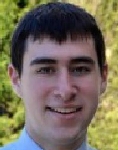 W’18, is a sophomore at Wharton and a contributor at The Daily Pennsylvanian, numberFire, and Fake Teams.
W’18, is a sophomore at Wharton and a contributor at The Daily Pennsylvanian, numberFire, and Fake Teams.
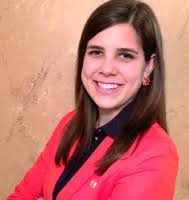 Great question.
Great question. 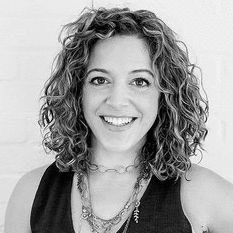 Exactly. And I also wasn’t thinking about what my needs and expectations were. One of the most important reasons why I wanted to start this business was to be able to spend more time with my kids and have that flexibility. So Felix and I talked about it, and we realized that it actually is important for me to have those few hours per day with the kids. I get scared thinking about looking back later in life and feeling as though I missed that chance to spend time with them. From there, we discussed how we were going to manage that need, and what it would look like for us. In a family business, it’s important to express when you’re unhappy about something in your personal space, but then you must also be able separate that out from what is happening workwise.
Exactly. And I also wasn’t thinking about what my needs and expectations were. One of the most important reasons why I wanted to start this business was to be able to spend more time with my kids and have that flexibility. So Felix and I talked about it, and we realized that it actually is important for me to have those few hours per day with the kids. I get scared thinking about looking back later in life and feeling as though I missed that chance to spend time with them. From there, we discussed how we were going to manage that need, and what it would look like for us. In a family business, it’s important to express when you’re unhappy about something in your personal space, but then you must also be able separate that out from what is happening workwise.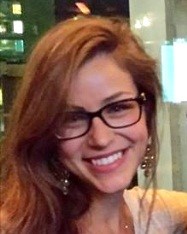 is an undergraduate senior in the Huntsman Program in International Studies and Business at Penn focusing on Management and Latin America.
is an undergraduate senior in the Huntsman Program in International Studies and Business at Penn focusing on Management and Latin America.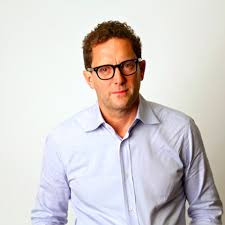 I think that the businesses that my business partner, Alan, and I like to start are businesses in which we have tasted the problems ourselves. It’s a good way to focus the mind and avoid misadventure if you know the problem you are trying to solve. And in the course of starting companies with Alan over the past 15 years, we came to employ hundreds of people in New York and all over the world. Despite the companies’ prospering, one of the things we never felt that we got entirely right was that collision between the entrepreneurial moment and big city real estate.
I think that the businesses that my business partner, Alan, and I like to start are businesses in which we have tasted the problems ourselves. It’s a good way to focus the mind and avoid misadventure if you know the problem you are trying to solve. And in the course of starting companies with Alan over the past 15 years, we came to employ hundreds of people in New York and all over the world. Despite the companies’ prospering, one of the things we never felt that we got entirely right was that collision between the entrepreneurial moment and big city real estate.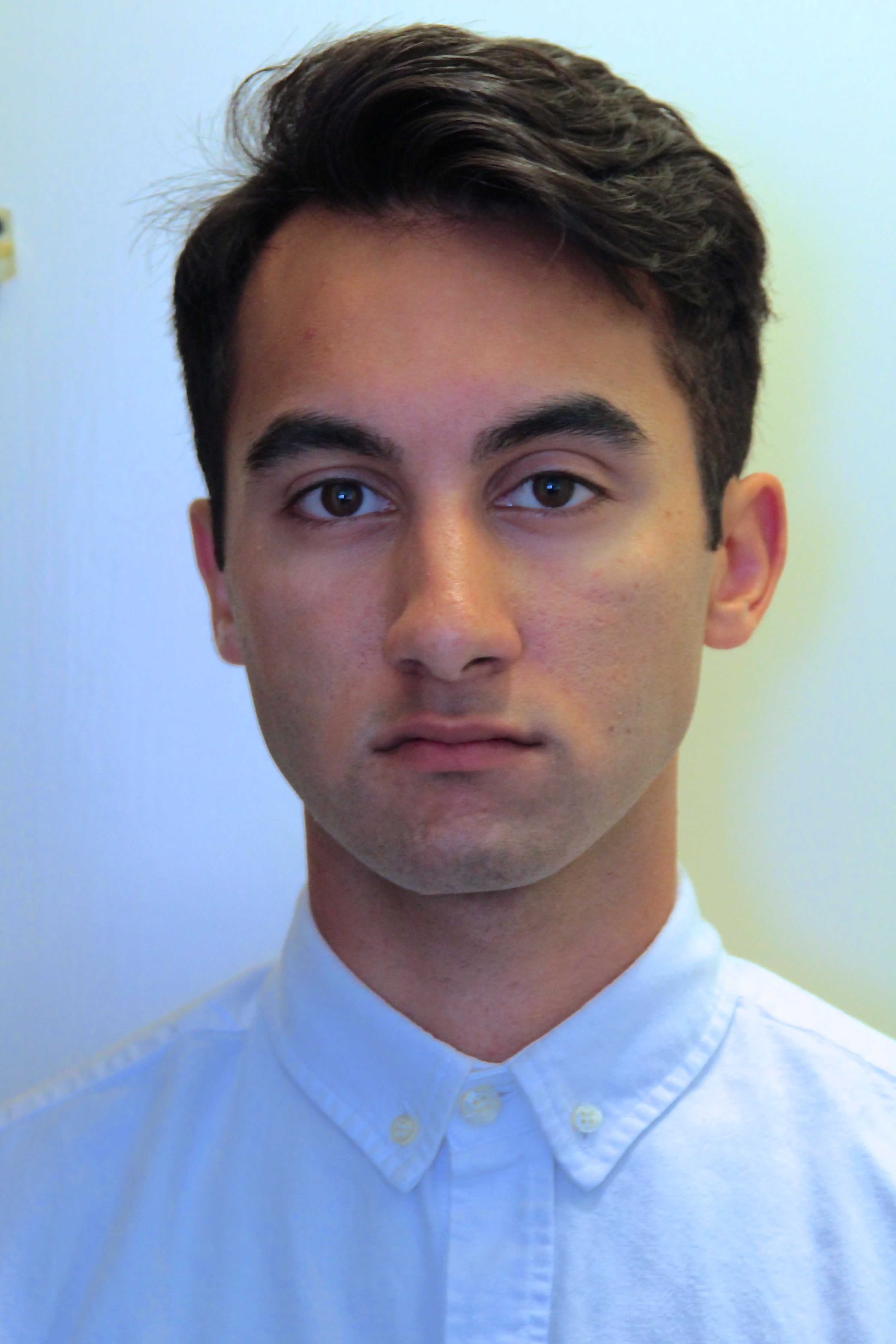 is an undergraduate junior at the Wharton School.
is an undergraduate junior at the Wharton School. You actually get some of the credit for that spark. I took your Total Leadership class. I was already working on upping my brain and I recognized that I was obese. I had already lost a lot of weight before I met you. I lost half the weight that I wanted to lose. It was interesting to understand that I needed to get my brain working right in order to get the spiritual and emotional things that we are capable of when we are performing really well. And what happened when I was in your Total Leadership class is that you encouraged a type of quantification, a measurement. I was focusing on my weight, how much was I eating, my IQ, my reaction time, and what I could do for those variables. But I never looked at investment return on the time and energy that I put into things. And it was your framework that said “if you’re spending a lot of energy in a particular area and you’re not getting results, maybe you shouldn’t do that.” And that made me start looking at how can I make this easier instead of just how can I get this done. It is that sense of ease and ability to not just do it with struggle and striving and just working really hard but to do it with a little bit of effortlessness and joy. That has become a big part of me becoming successful as a human being and bio-hacker.
You actually get some of the credit for that spark. I took your Total Leadership class. I was already working on upping my brain and I recognized that I was obese. I had already lost a lot of weight before I met you. I lost half the weight that I wanted to lose. It was interesting to understand that I needed to get my brain working right in order to get the spiritual and emotional things that we are capable of when we are performing really well. And what happened when I was in your Total Leadership class is that you encouraged a type of quantification, a measurement. I was focusing on my weight, how much was I eating, my IQ, my reaction time, and what I could do for those variables. But I never looked at investment return on the time and energy that I put into things. And it was your framework that said “if you’re spending a lot of energy in a particular area and you’re not getting results, maybe you shouldn’t do that.” And that made me start looking at how can I make this easier instead of just how can I get this done. It is that sense of ease and ability to not just do it with struggle and striving and just working really hard but to do it with a little bit of effortlessness and joy. That has become a big part of me becoming successful as a human being and bio-hacker.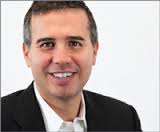 Let’s get into some examples. One that’s been fun at Vynamic is what we call “Zmail”. The Z stands for catching some z’s – catch some sleep. It’s an email HR policy at Vynamic where we ask that everyone on the team does not spend any time on email during Zmail hours — 10 p.m. to 6 a.m. Some people think that’s shocking – like how late 10 PM is and other people think what’s the big deal, shouldn’t we be sleeping then anyway? And the other big part of this policy is no emails over the weekend. Now if something urgent does comes up, we’ll take care of it by special exception and prior arrangement.
Let’s get into some examples. One that’s been fun at Vynamic is what we call “Zmail”. The Z stands for catching some z’s – catch some sleep. It’s an email HR policy at Vynamic where we ask that everyone on the team does not spend any time on email during Zmail hours — 10 p.m. to 6 a.m. Some people think that’s shocking – like how late 10 PM is and other people think what’s the big deal, shouldn’t we be sleeping then anyway? And the other big part of this policy is no emails over the weekend. Now if something urgent does comes up, we’ll take care of it by special exception and prior arrangement. is an undergraduate freshman in the Vagelos Program in the Life Sciences and Management at the University of Pennsylvania.
is an undergraduate freshman in the Vagelos Program in the Life Sciences and Management at the University of Pennsylvania.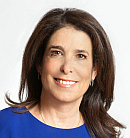 I enjoyed venture capital but it’s still very different to be an investor than to be someone who’s really driving a business. I missed that. And, at the same time, I was being sought out to do consulting projects because I knew a lot about interactive television from my experience at Americast. I started building teams, finding other independent professionals—many of whom worked at major consulting firms—and started helping clients who were coming to me solve their problems with these independent professionals. Before I knew it, I was one of the largest outside contractors to the Corporation of Public Broadcasting, doing a series of five projects all with different teams constructed of independent professionals. What they were saying to me was Boy, this is really interesting and unique. No one else is really doing this.
I enjoyed venture capital but it’s still very different to be an investor than to be someone who’s really driving a business. I missed that. And, at the same time, I was being sought out to do consulting projects because I knew a lot about interactive television from my experience at Americast. I started building teams, finding other independent professionals—many of whom worked at major consulting firms—and started helping clients who were coming to me solve their problems with these independent professionals. Before I knew it, I was one of the largest outside contractors to the Corporation of Public Broadcasting, doing a series of five projects all with different teams constructed of independent professionals. What they were saying to me was Boy, this is really interesting and unique. No one else is really doing this.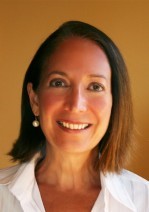 Reluctantly and by accident. I am not an entrepreneur by nature. I married into a business. When I met my husband he had just co-founded Stonyfield Yogurt. What I didn’t realize was that I wasn’t just marrying a man, I was marrying a business as well. I didn’t get that until I moved up to the farm, which was a very intense introduction to the business. We lived with the business— our factory was there, employees were there. It was a time which I later came to call “the full catastrophe” because we lost money for nine years and didn’t have a profitable quarter for almost a decade. It was sort of a shocking entry into the life of a family and the life of a business.
Reluctantly and by accident. I am not an entrepreneur by nature. I married into a business. When I met my husband he had just co-founded Stonyfield Yogurt. What I didn’t realize was that I wasn’t just marrying a man, I was marrying a business as well. I didn’t get that until I moved up to the farm, which was a very intense introduction to the business. We lived with the business— our factory was there, employees were there. It was a time which I later came to call “the full catastrophe” because we lost money for nine years and didn’t have a profitable quarter for almost a decade. It was sort of a shocking entry into the life of a family and the life of a business.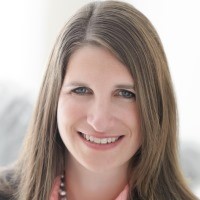 Allison Karl O’Kelly: Yes. I think that companies now, for the most part, want to make flexibility work. This is especially true when you’re talking about the Human Resources department of many organizations. They understand the importance of flexibility. Now it’s about understanding how to make flexible arrangements work. I think that once the mindset is there, it’s a lot easier to help companies implement strategies to make it work.
Allison Karl O’Kelly: Yes. I think that companies now, for the most part, want to make flexibility work. This is especially true when you’re talking about the Human Resources department of many organizations. They understand the importance of flexibility. Now it’s about understanding how to make flexible arrangements work. I think that once the mindset is there, it’s a lot easier to help companies implement strategies to make it work.